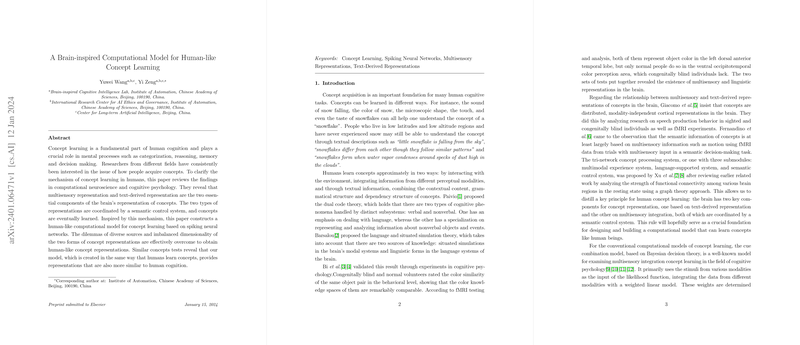Introduction
Concept learning is a cornerstone of human cognition, fundamental to activities such as categorizing, reasoning, and decision making. In understanding concept learning, multisensory representation and text-derived representation stand out as two pillars within the brain's knowledge structure. The harmonious interplay between these pillars is orchestrated by a semantic control system within the brain, crafting a nuanced and adaptive learning process.
Mimicking Human Cognition
Researchers have created a brain-inspired computational model that leverages spiking neural networks to replicate this dance of concept learning. Challenging issues like source diversity and imbalanced dimensionality between sensory and textual data are elegantly navigated in the model, achieving a closer alignment with the way humans process and understand concepts.
Computational Model Structure
Integrating insights from computational neuroscience and cognitive psychology, the model is neatly divided into three segments: a multisensory information processing module, a text-derived information processing module, and a semantic cooperation module. Each of these mimics a specific cognitive function—corresponding to the brain's multimodal experiential system, linguistic system, and semantic control system, respectively—to construct human-like concept representations.
Model Evaluation and Future Prospects
Evaluations through 'similar concepts tests' showcase that the model generates representations resonant with human cognition. The nuanced interplay between sensory and text-based representations echoes the complexity of human thought, exemplifying the model’s sophisticated comprehension of concepts. While this research introduces a prototype aligning closely with the human thought process, future explorations in cognitive mechanisms and dataset mapping, amongst others, hold the promise of furthering brain-inspired artificial intelligence's frontier.
